Like many lovers of the Australian bush, when I moved on to my 2.5 hectare property in December 1998, I tried to eradicate anything that wasn’t native.
“Away with the lantana, groundsel and privet; death to the camphor laurels!” I cried as I slashed, pulled and poisoned.
Among the unwanted plants cluttering my piece of Paradise was a lot of Fishbone Fern. It’s a hardy and very stubborn plant. In seeking to banish it into oblivion, the only thing I produced was a sore back.
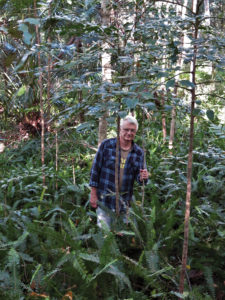
So eventually I sought to put it to good use by allowing it to grow down a bare slope that needed protection from erosion. It did a fine job. And there things rested for 3-4 years, when suddenly lots of native vegetation began to poke their heads through the dense, seemingly impenetrable mass of Fishbone Fern. White Bollygums, Celerywood, Piccabeen Palms and Native Ginger to name a few, all started to grow up through the fern, about 50-60 plants in an area 10×30 metres.
I had never had any success getting anything to grow on that bare slope. Was the Fishbone Fern enriching the soil? I pulled up a clump and smelled the roots.
“Wow! If I was a plant I’d really like that!”
Then I inspected the front along which the Fishbone Fern was spreading. It was out-competing the Molasses Grass!
“Alleluia, there is a God!” I cried in ecstasy knowing that the grass that had bothered my sinuses for years was on the way out.
The Fishbone Fern was acting like a pioneer species, renewing the soil, encouraging the growth of natives and out-competing noxious grasses. It’s saved me a huge amount of work.
“No one will believe this,” I thought. “No one who has spent days, weeks, years getting rid of Fishbone Fern will want to hear that their labour may have been unnecessary.”
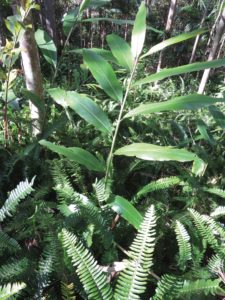
My enthusiasm for Fishbone Fern goes against the accepted way of doing things.
Maybe we’ve been too hasty to remove this ‘weed’ rather than let it be and see what good it might do. In the long term it may provide a hardy and resilient ground cover that will survive the ravages of climate change, protect the soil from erosion and provide habitat for small animals. After all, ferns have been around for 300 million years and have survived many of Earth’s upheavals.
Our local Land for Wildlife Officer, Stephanie Reif, visited my property and had not seen anything like this on any other property. Perhaps there are factors at work on my property that, in combination with the Fishbone Fern, have produced this result. By trying it out on other properties, we may see if what I’ve found will apply in other conditions.
In a perfect world, we would do a scientific study to determine if Fishbone Fern on its own is a pioneer species. It might require a 3-4 year study, maybe one day it will happen.
Meanwhile, I suggest this to my fellow bush regenerators: if you have a patch of Fishbone Fern of perhaps 5×5 metres, try weeding around it to keep it from spreading for 3-4 years and see what happens. It might surprise you.
Wishing you every success…
Article and photos by Herb Fenn
Land for Wildlife member
Blackall Range, Sunshine Coast
A conservation partnerships officer’s view
Herb’s property is at Cooloolabin on the Blackall Range at around 300m elevation bordering Mapleton National Park. Looking at aerial photos, Herb’s property was first cleared between 1971 and 1974. You can see from the 1988 aerial that it was nearly fully cleared and heavily disturbed with some areas grass free with exposed soil.
The Cooloolabin area has some patches of basalt that were highly sought after for crops and pasture. Herb’s property doesn’t have basalt, but is the older, less fertile North Arm volcanic soils. As a goat farm for many years, the goats would have seriously eroded and compacted the topsoil. Using a combination of natural regeneration and revegetation, Herb has allowed his property to come back to mostly native vegetation. Being surrounded by an excellent seed source has helped a lot.
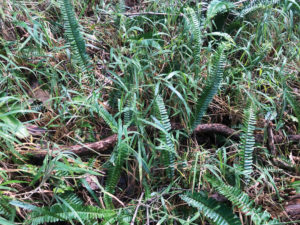
In the areas where Fishbone Fern is in the understorey, a number of other species are coming up on their own – Celerywood (Polyscias elegans), Piccabeen Palm (Archontophoenix cunninghamiana), White Bollygum (Neolitsea dealbata), Native Ginger (Alpinia caerulea), Muttonwood (Myrsine variabilis), Creek Sandpaper Fig (Ficus coronata) and Scentless Rosewood (Synoum glandulosum). The planted Blue Quandongs (Elaeocarpus grandis) are starting to reproduce as well.
Has the Fishbone Fern helped with regeneration of native species? Maybe. Maybe it has in conjunction with the trees Herb planted 20 years ago finally getting tall enough to shade out the weedy grasses and helping slow down and allowing water to soak in. The Fishbone Fern would have also helped create mulch by trapping leaves amongst its fronds and improving the soil fertility. In an area that had been previously heavily grazed by goats, for potentially decades, the soil would have been very compacted and potentially nutrient poor. To know for sure, we would have needed to set up a scientific experiment to compare different areas over time.
Herb’s example shows that weed control is not always a black and white choice between good and bad. Sometimes regeneration is a choice between leaving an unwanted plant for now and removing a really bad weed. Or leaving a weed to fill a purpose for a certain length of time, e.g. erosion control. In a fire prone environment, I would definitely prefer Fishbone Fern to the highly flammable Molasses Grass! I’ll be interested to see how the site progresses into the future.
Article by Stephanie Reif
Land for Wildlife Officer
Sunshine Coast Council
Fishbone Fern (Nephrolepis cordifolia) is a native plant that is naturally distributed from northern NSW through to north-eastern Australia, including SEQ. The populations growing around Sydney and in parts of Victoria, and in many countries around the world are introduced and considered weedy.
Even though Fishbone Fern is native, it is often considered a weed and is actively removed. However, as Herb’s article shows, Fishbone Fern is a very tenacious and valuable pioneer plant that can help the restoration process of degraded lands. The creeping underground stems (rhizomes and stolons) make Fishbone Fern great at holding onto steep slopes and trapping sediment and moisture, enabling other plants to grow and eroding soils to stabilise. Fishbone Fern can become a problem when it jumps the fence from backyards or is dumped into bushland areas as garden waste. If you have Fishbone Fern on your property and it is not spreading or taking over other native ground-covers, just leave it as it is.

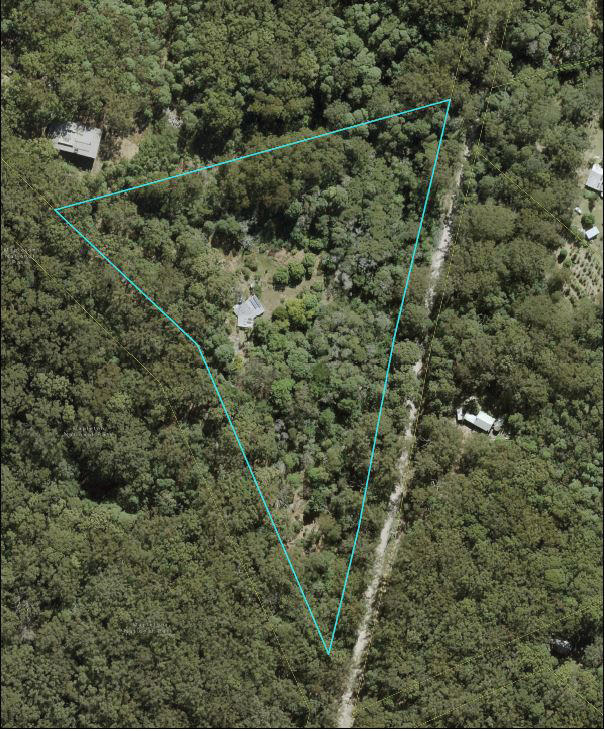
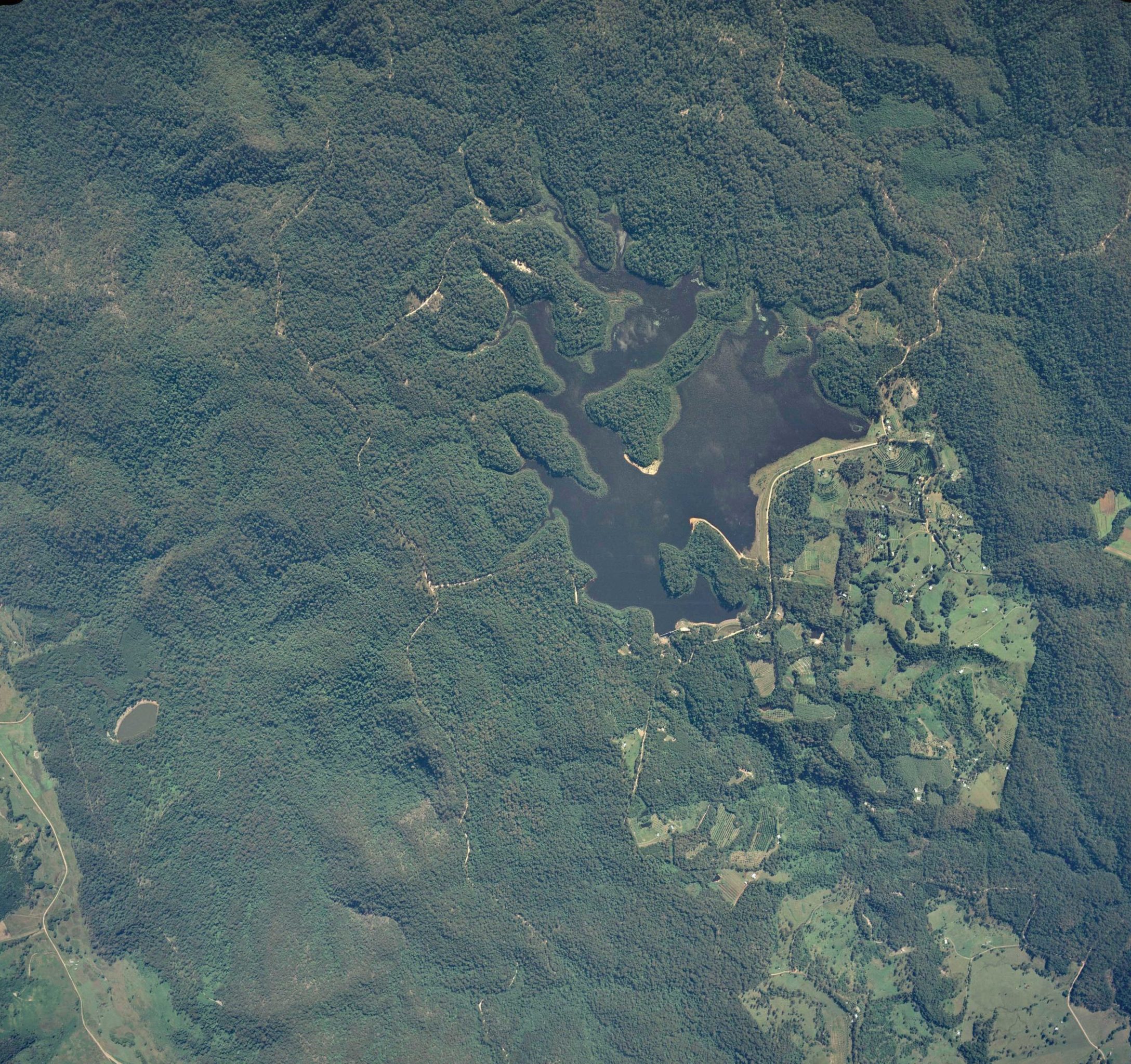
Dear Herb,
Thank you for your very informative article on fishbone ferns. I live not far from you at Kulangoor off Wappa Falls and have fishbone ferns on my property.
They have originally spread from a neighbouring property’s garden at the back of my place, many decades ago. The patch of ferns is now approx 15m x 15m in size and slowly spreading through my natural bush block.
I have tried twice to eradicate them with a pest control person, but to no avail. They sprung back in no time. They are in an area that is quite sloped and difficult to access. Do you think it’s ok to just leave them and let nature deal with it?
I am looking forward to your reply.
Kind regards,
Irene
Email: ivandorssen@bigpond.com